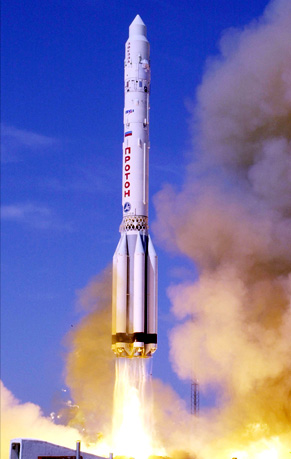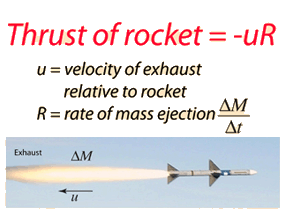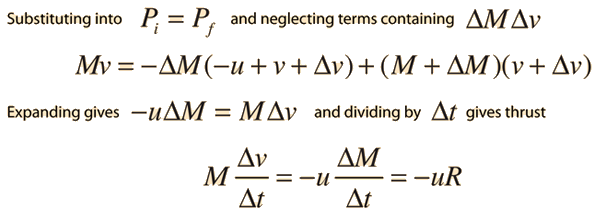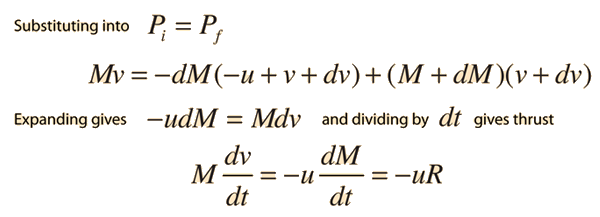Force and Momentum
The net external force acting on an object can be evaluated as the rate of change of momentum. This turns out to be a more fundamental way of stating the force than the use of Newton's second law. Using Newton's second law and momentum:

But this limited relationship can be generalized to

and further generalized by calculus methods to include instantaneous rates of change
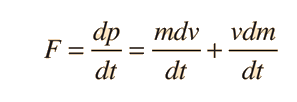 | This formulation of the force relationship permits varying mass, as in rocket propulsion. |
In the language of calculus, we say that the force is defined as the derivative of the momentum. The process above involves the product rule for derivatives.
Limits on Newton's 2nd law
| HyperPhysics***** Mechanics ***** Newton's laws | R Nave |

